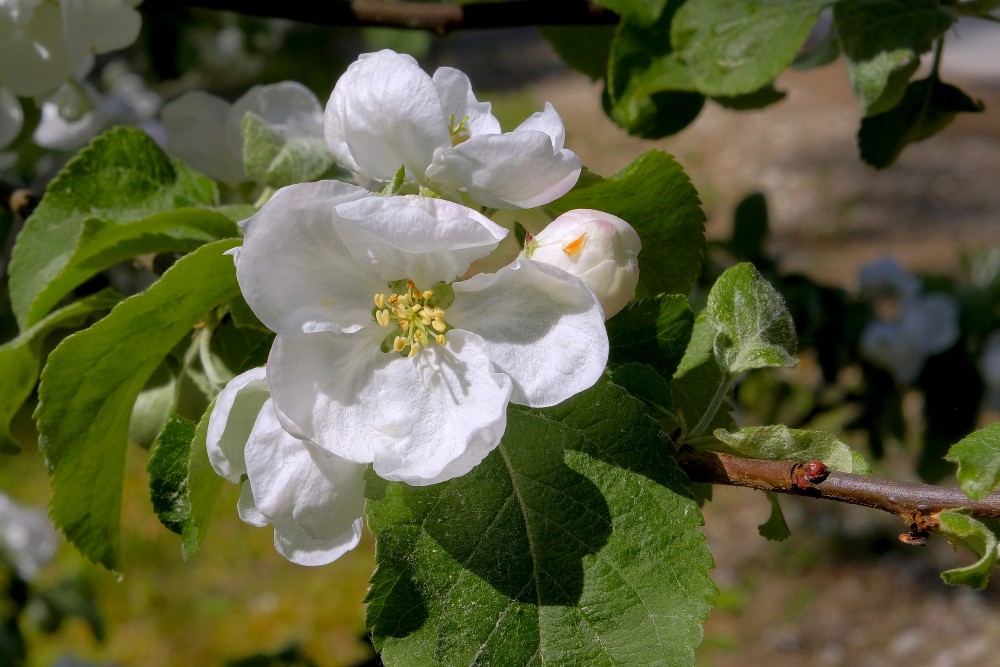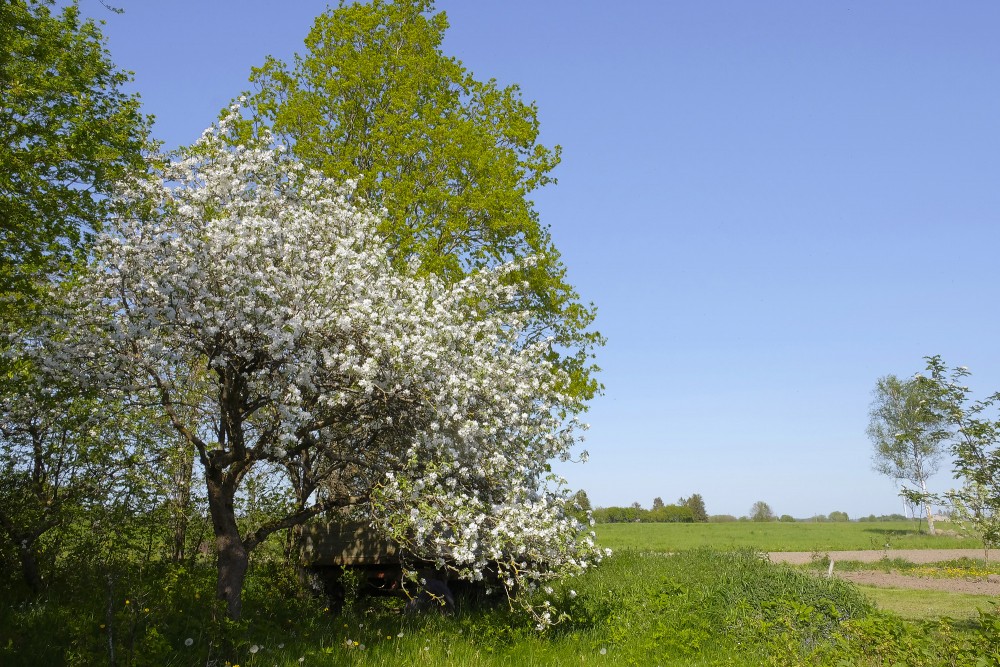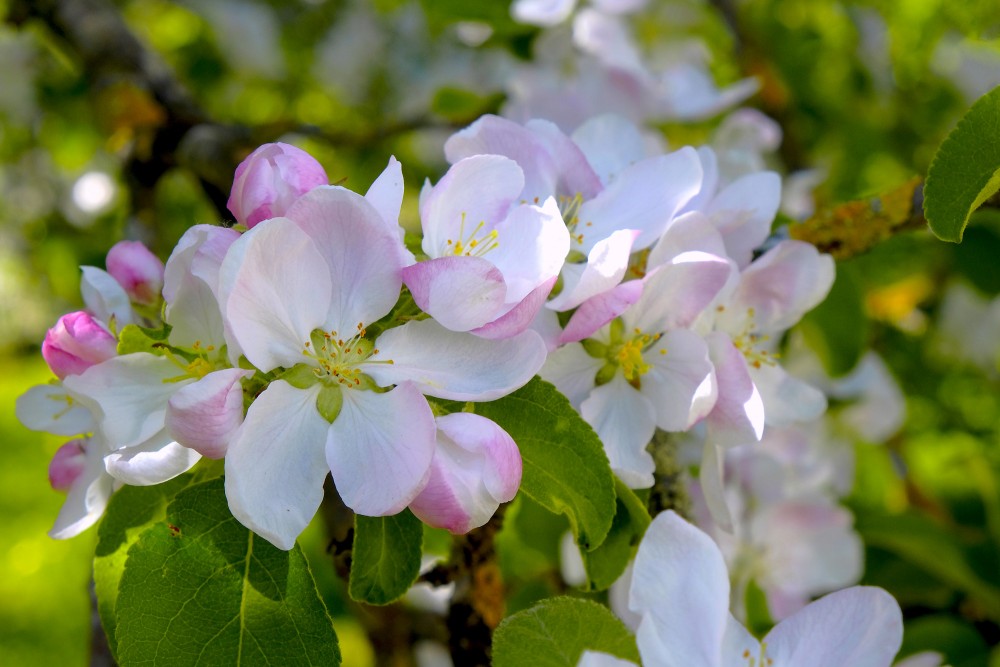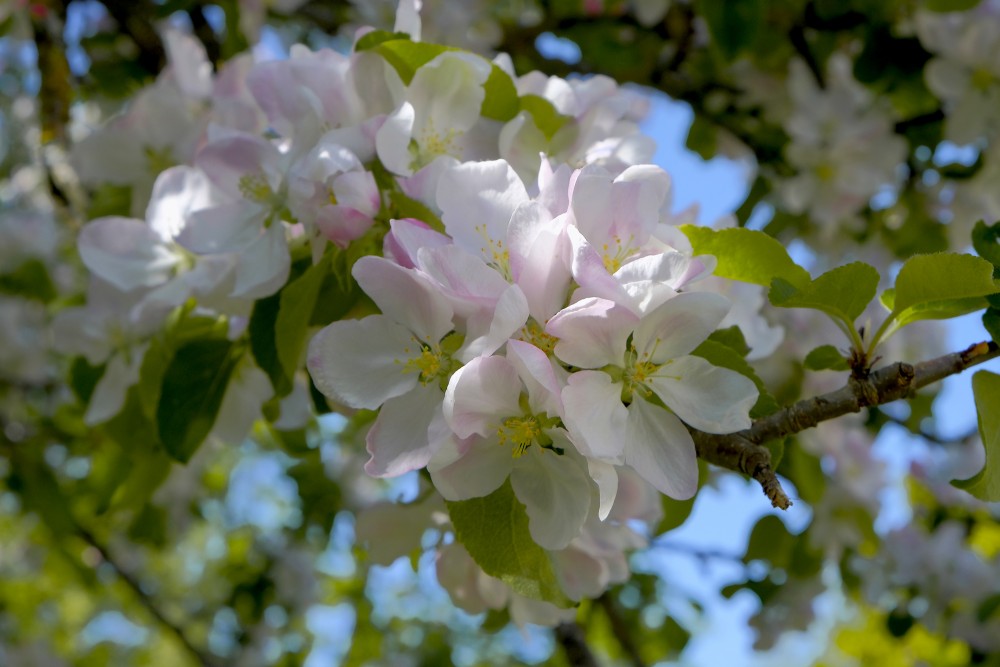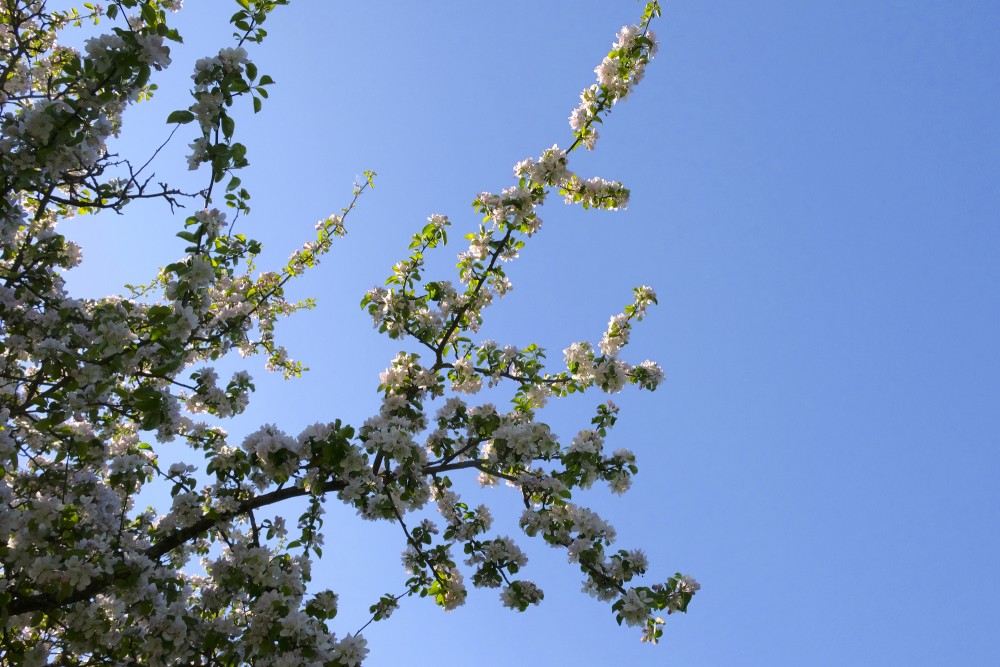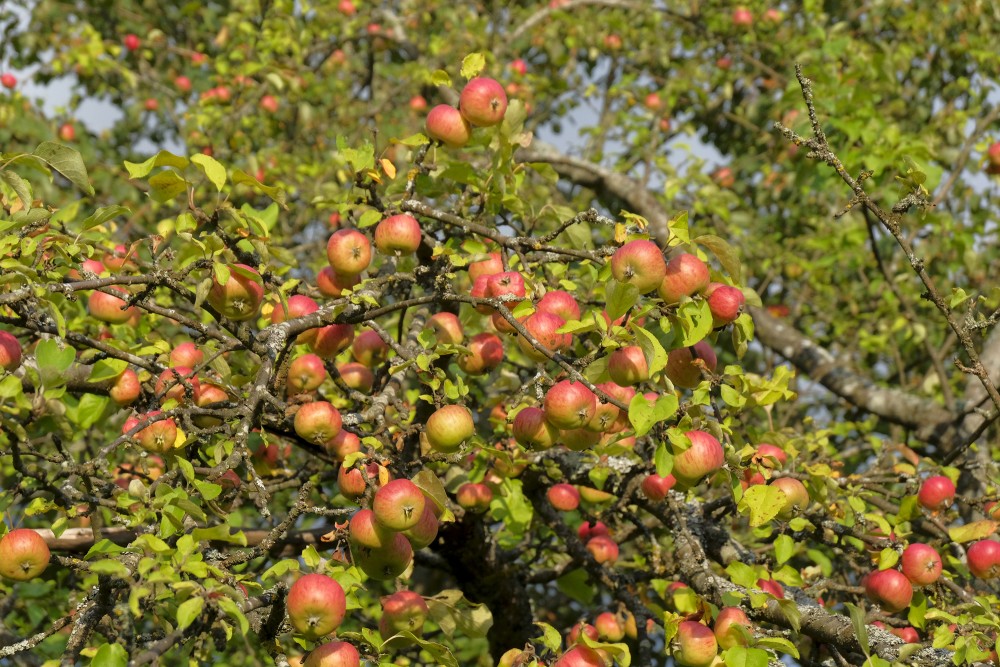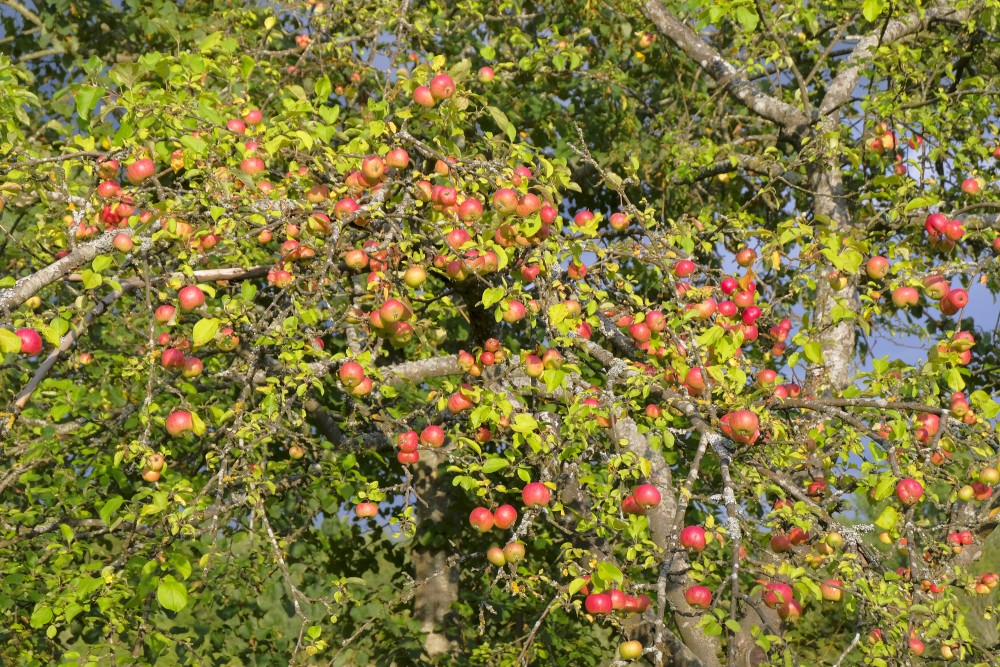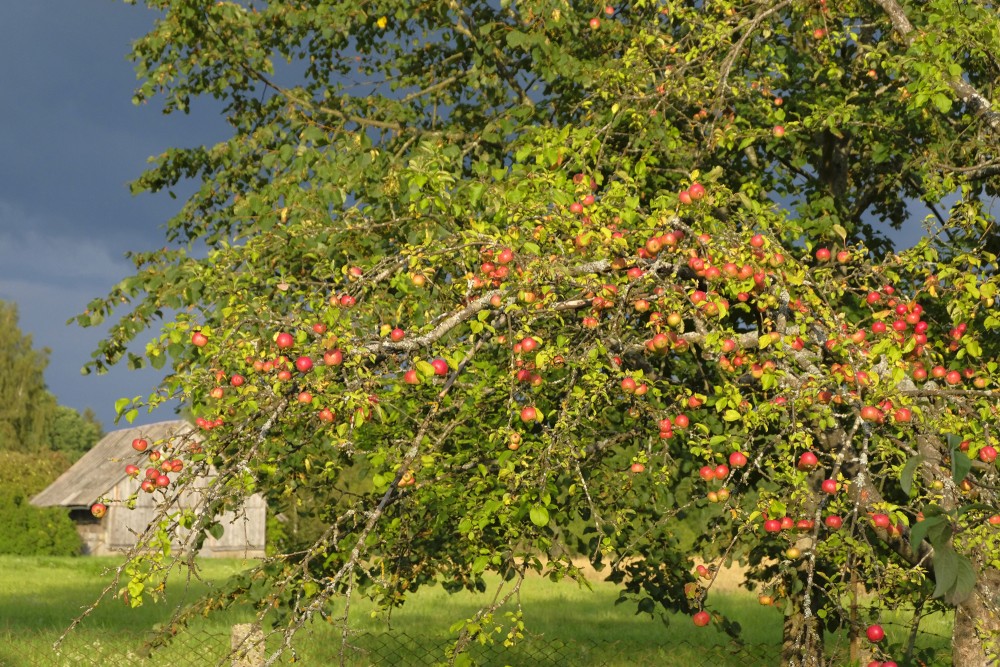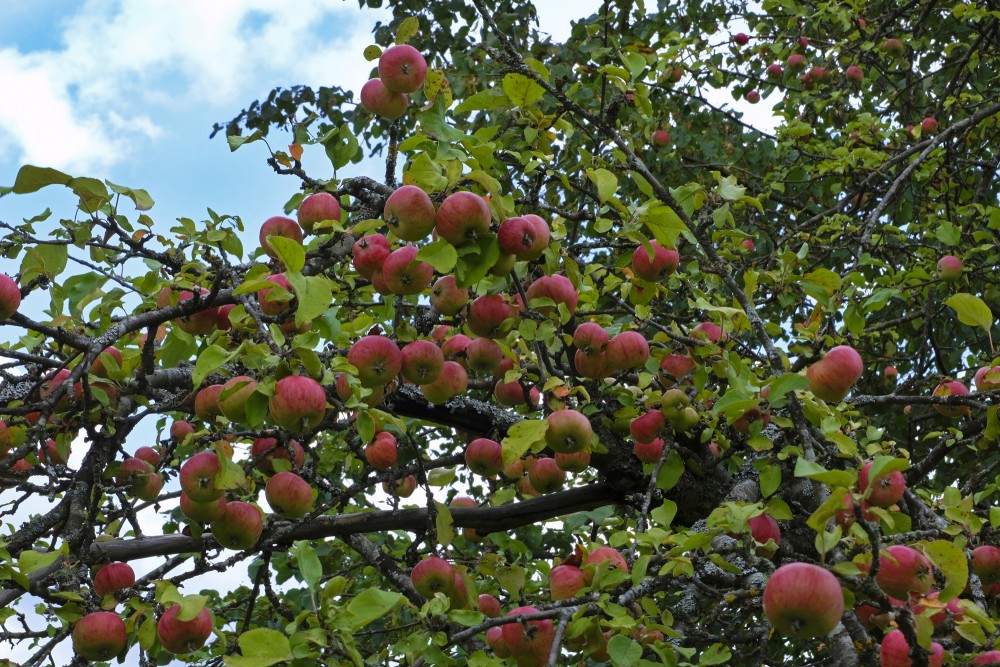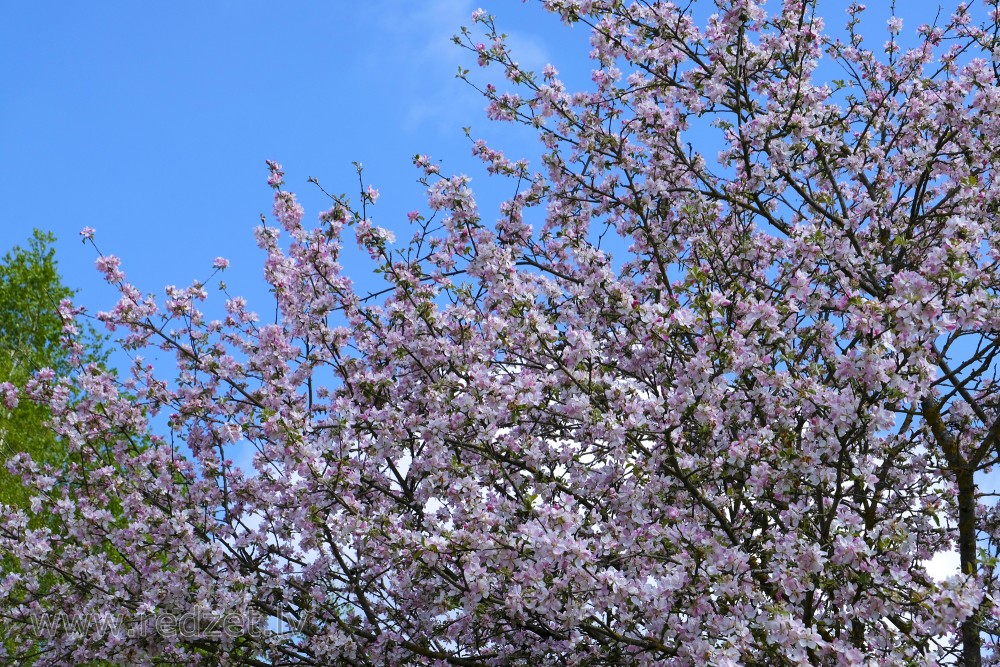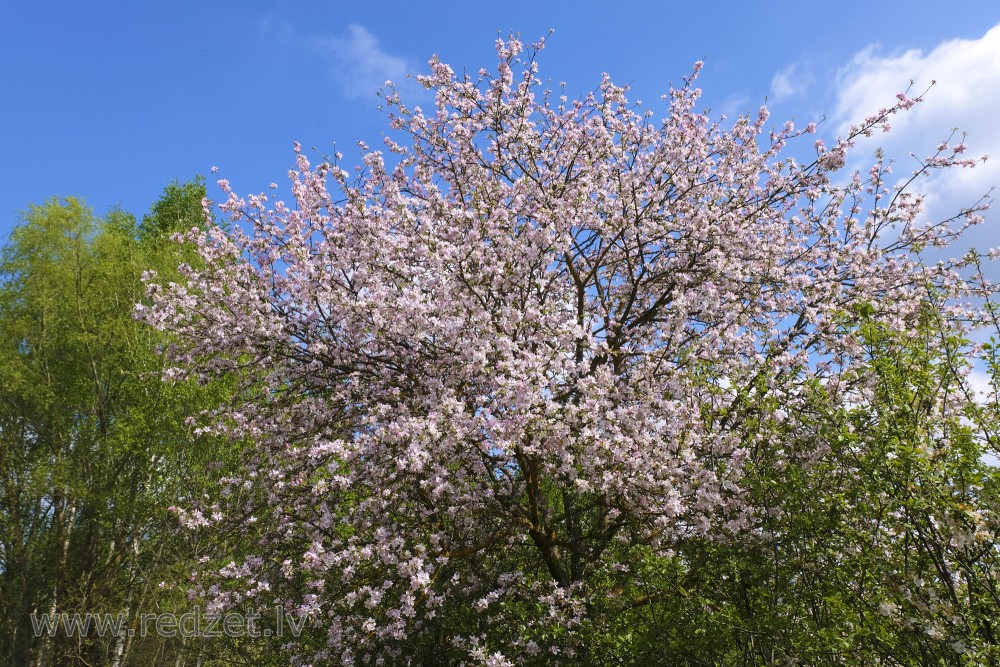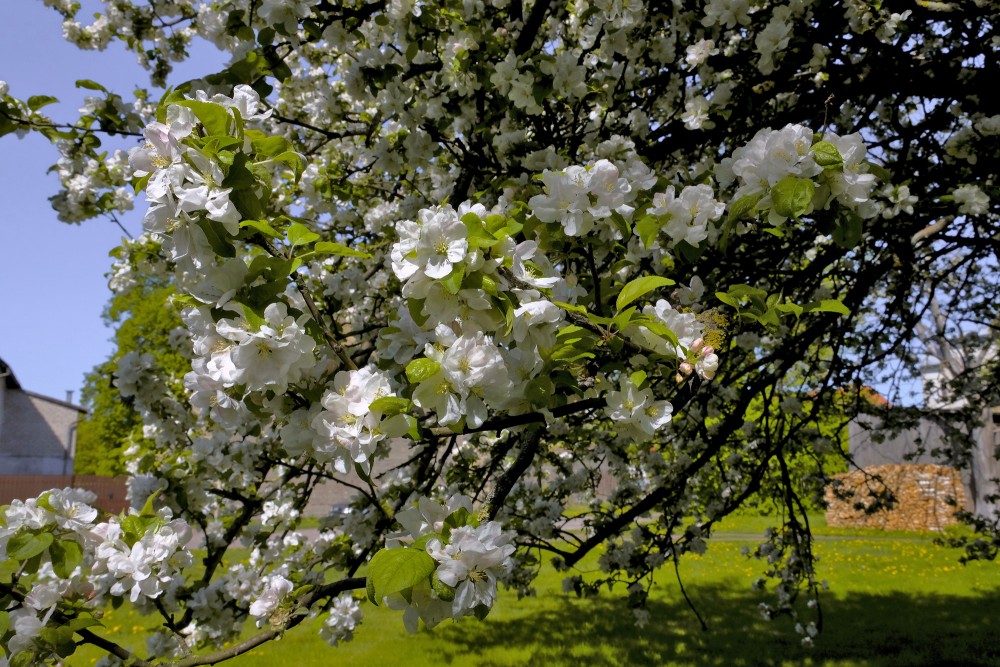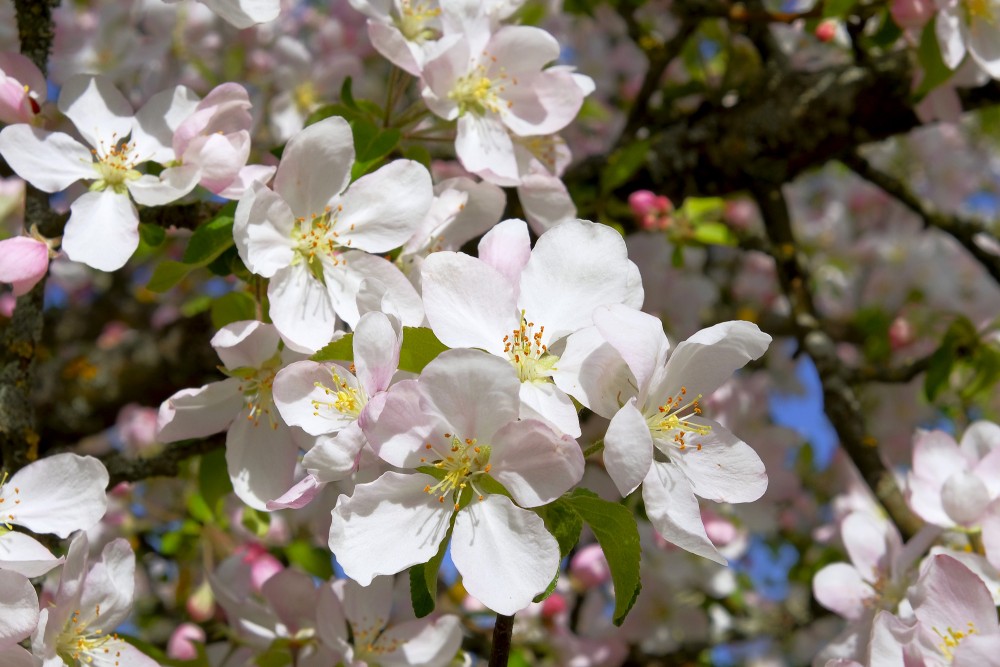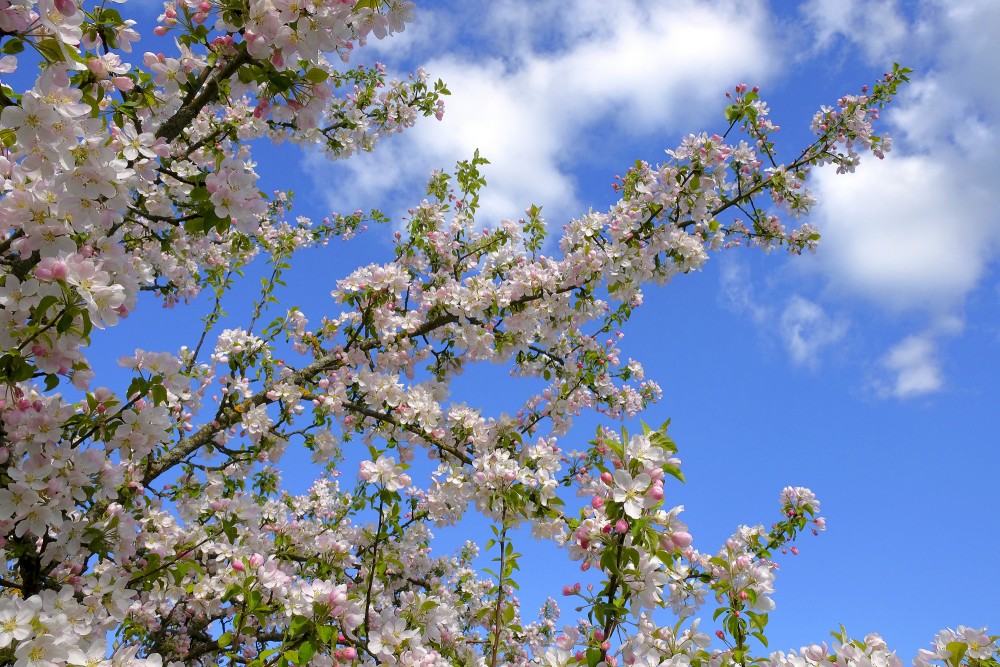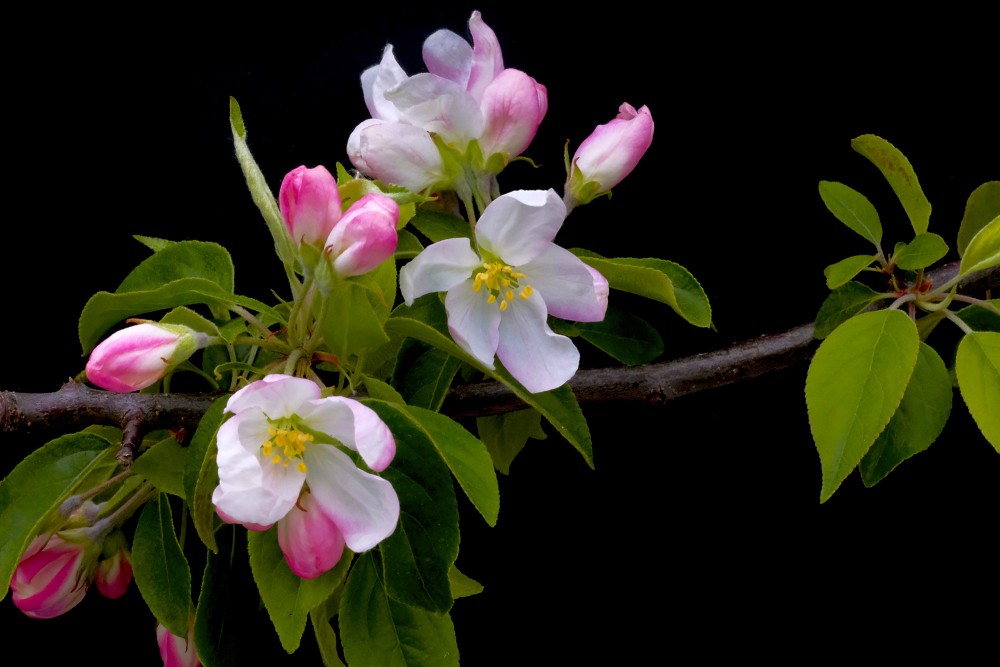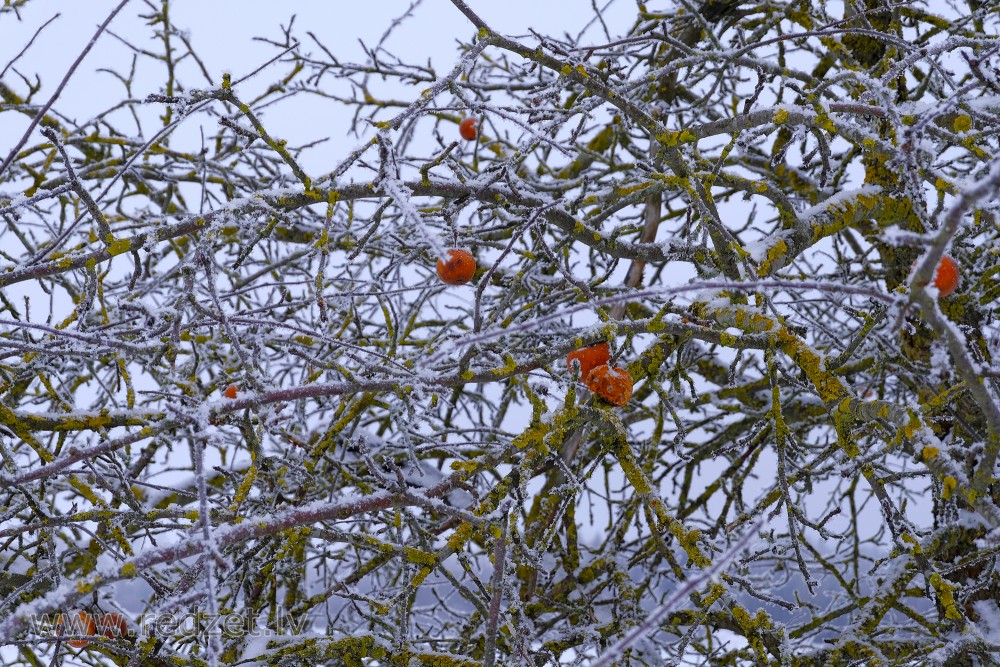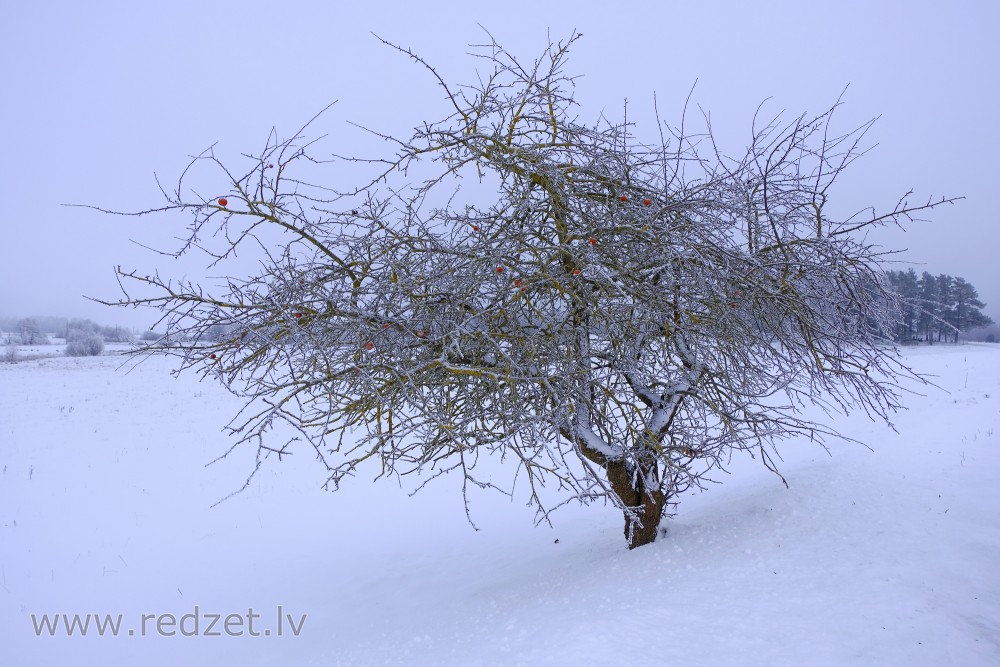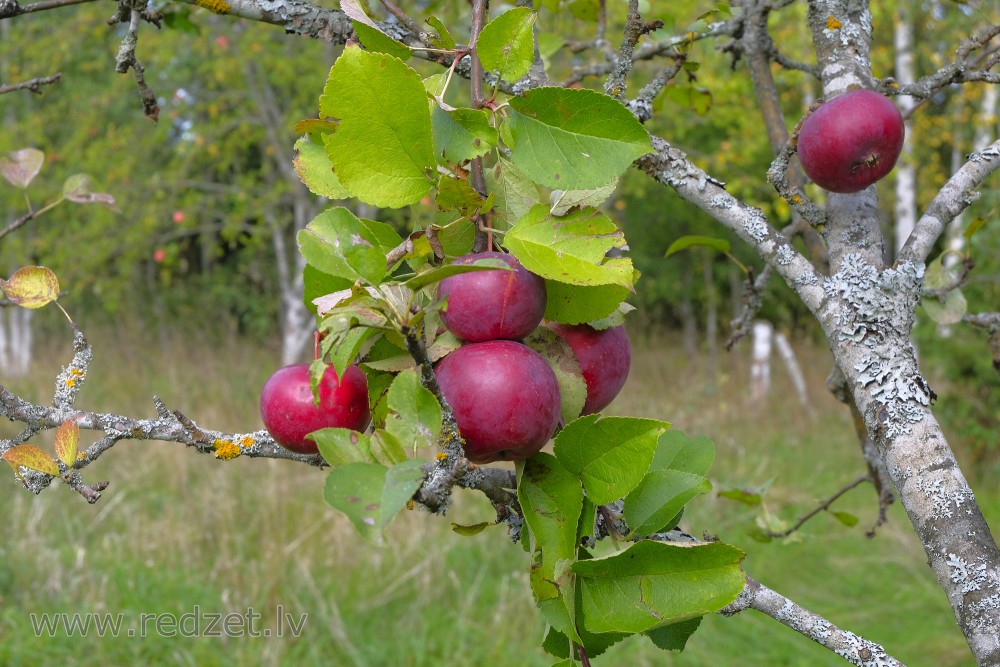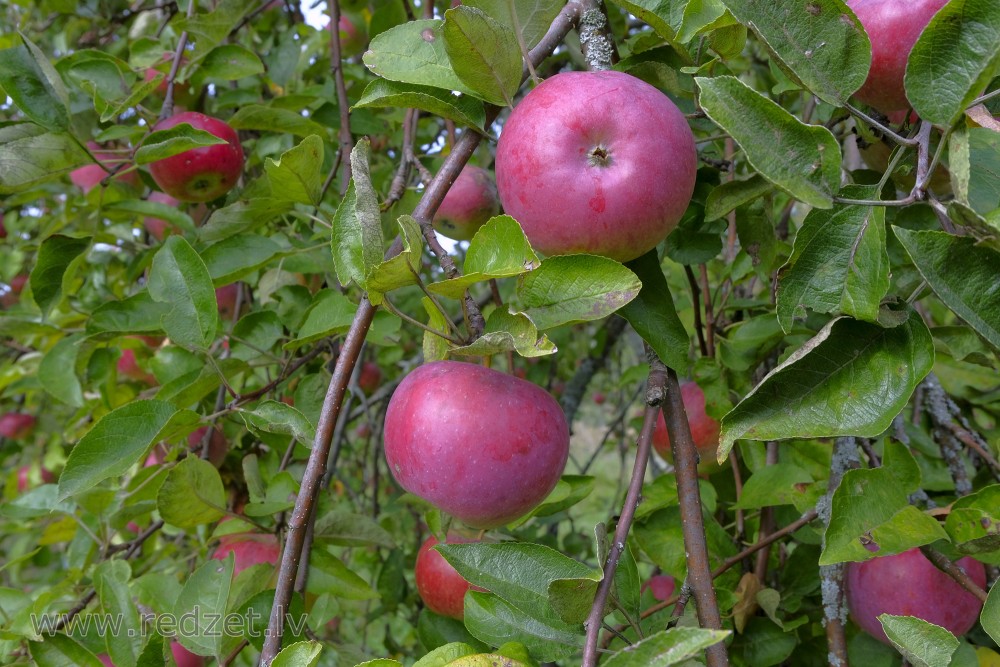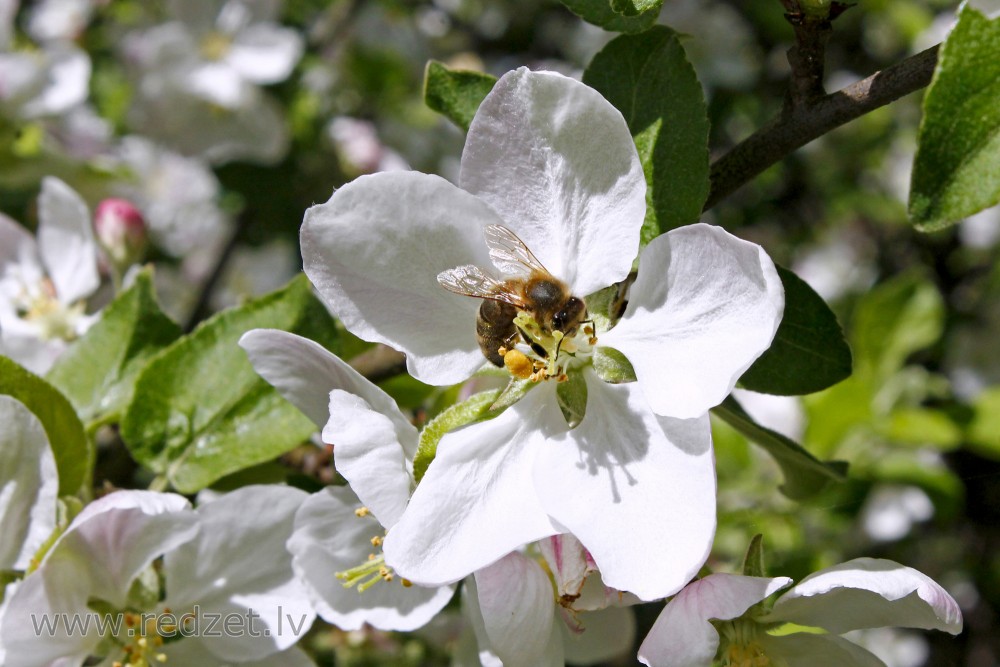Apple tree (Malus domestica)
An apple is a sweet, edible fruit produced by an apple tree (Malus domestica). Apple trees are cultivated worldwide, and are the most widely grown species in the genus Malus. The tree originated in Central Asia, where its wild ancestor, Malus sieversii, is still found today. Apples have been grown for thousands of years in Asia and Europe, and were brought to North America by European colonists. Apples have religious and mythological significance in many cultures, including Norse, Greek and European Christian traditions.
Apple trees are large if grown from seed. Generally apple cultivars are propagated by grafting onto rootstocks, which control the size of the resulting tree. There are more than 7,500 known cultivars of apples, resulting in a range of desired characteristics. Different cultivars are bred for various tastes and uses, including cooking, eating raw and cider production. Trees and fruit are prone to a number of fungal, bacterial and pest problems, which can be controlled by a number of organic and non-organic means. In 2010, the fruit's genome was sequenced as part of research on disease control and selective breeding in apple production.
Worldwide production of apples in 2014 was 84.6 million tonnes, with China accounting for 48% of the total.
Scientific classification
Kingdom: Plantae
Clade: Angiosperms
Clade: Eudicots
Clade: Rosids
Order: Rosales
Family: Rosaceae
Genus: Malus
Species: M. pumila
Botanical information
The apple is a deciduous tree, generally standing 6 to 15 ft (1.8 to 4.6 m) tall in cultivation and up to 30 ft (9.1 m) in the wild. When cultivated, the size, shape and branch density are determined by rootstock selection and trimming method. The leaves are alternately arranged dark green-colored simple ovals with serrated margins and slightly downy undersides.
Blossoms are produced in spring simultaneously with the budding of the leaves, and are produced on spurs and some long shoots. The 3 to 4 cm (1.2 to 1.6 in) flowers are white with a pink tinge that gradually fades, five petaled, with an inflorescence consisting of a cyme with 4–6 flowers. The central flower of the inflorescence is called the "king bloom"; it opens first, and can develop a larger fruit.
The fruit matures in late summer or autumn, and cultivars exist with a wide range of sizes. Commercial growers aim to produce an apple that is 2 3⁄4 to 3 1⁄4 in (7.0 to 8.3 cm) in diameter, due to market preference. Some consumers, especially those in Japan, prefer a larger apple, while apples below 2 1⁄4 in (5.7 cm) are generally used for making juice and have little fresh market value. The skin of ripe apples is generally red, yellow, green, pink, or russetted although many bi- or tri-colored cultivars may be found. The skin may also be wholly or partly russeted i.e. rough and brown. The skin is covered in a protective layer of epicuticular wax. The exocarp (flesh) is generally pale yellowish-white, though pink or yellow exocarps also occur.
Wild ancestors
The original wild ancestor of Malus pumila was Malus sieversii, found growing wild in the mountains of Central Asia in southern Kazakhstan, Kyrgyzstan, Tajikistan, and Xinjiang, China. Cultivation of the species, most likely beginning on the forested flanks of the Tian Shan mountains, progressed over a long period of time and permitted secondary introgression of genes from other species into the open-pollinated seeds. Significant exchange with Malus sylvestris, the crabapple, resulted in current populations of apples being more related to crabapples than to the more morphologically similar progenitor Malus sieversii. In strains without recent admixture the contribution of the latter predominates.
Genome
In 2010, an Italian-led consortium announced they had sequenced the complete genome of the apple in collaboration with horticultural genomicists at Washington State University, using 'Golden Delicious'. It had about 57,000 genes, the highest number of any plant genome studied to date and more genes than the human genome (about 30,000). This new understanding of the apple genome will help scientists in identifying genes and gene variants that contribute to resistance to disease and drought, and other desirable characteristics. Understanding the genes behind these characteristics will allow scientists to perform more knowledgeable selective breeding. The genome sequence also provided proof that Malus sieversii was the wild ancestor of the domestic apple—an issue that had been long-debated in the scientific community.
Cultivars
There are more than 7,500 known cultivars of apples.[36] Cultivars vary in their yield and the ultimate size of the tree, even when grown on the same rootstock. Different cultivars are available for temperate and subtropical climates. The UK's National Fruit Collection, which is the responsibility of the Department of Environment Food and Rural Affairs, includes a collection of over 2,000 cultivars of apple tree in Kent. The University of Reading, which is responsible for developing the UK national collection database, provides access to search the national collection. The University of Reading's work is part of the European Cooperative Programme for Plant Genetic Resources of which there are 38 countries participating in the Malus/Pyrus work group.
The UK's national fruit collection database contains a wealth of information on the characteristics and origin of many apples, including alternative names for what is essentially the same "genetic" apple cultivar. Most of these cultivars are bred for eating fresh (dessert apples), though some are cultivated specifically for cooking (cooking apples) or producing cider. Cider apples are typically too tart and astringent to eat fresh, but they give the beverage a rich flavor that dessert apples cannot.
Commercially popular apple cultivars are soft but crisp. Other desired qualities in modern commercial apple breeding are a colorful skin, absence of russeting, ease of shipping, lengthy storage ability, high yields, disease resistance, common apple shape, and developed flavor. Modern apples are generally sweeter than older cultivars, as popular tastes in apples have varied over time. Most North Americans and Europeans favor sweet, subacid apples, but tart apples have a strong minority following. Extremely sweet apples with barely any acid flavor are popular in Asia and especially Indian Subcontinent .
Old cultivars are often oddly shaped, russeted, and have a variety of textures and colors. Some find them to have a better flavor than modern cultivars, but they may have other problems which make them commercially unviable—low yield, disease susceptibility, poor tolerance for storage or transport, or just being the "wrong" size. A few old cultivars are still produced on a large scale, but many have been preserved by home gardeners and farmers that sell directly to local markets. Many unusual and locally important cultivars with their own unique taste and appearance exist; apple conservation campaigns have sprung up around the world to preserve such local cultivars from extinction. In the United Kingdom, old cultivars such as 'Cox's Orange Pippin' and 'Egremont Russet' are still commercially important even though by modern standards they are low yielding and susceptible to disease.
en.wikipedia.org
